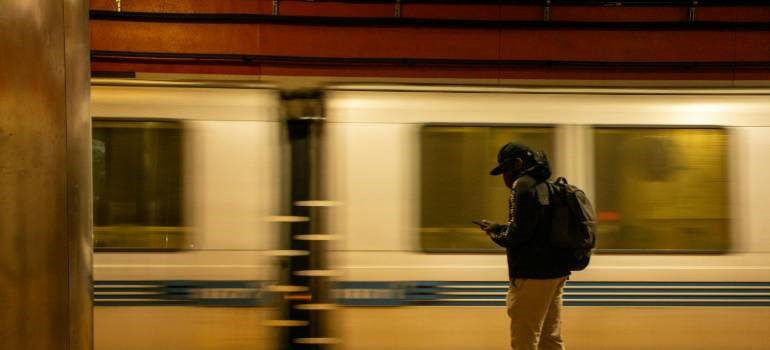A relocation gap happens when you have to leave your old home before the new one is ready. In the Bay Area, this situation is common because of high demand, competitive rentals, and overlapping lease schedules. You may find yourself between apartments or even paying two rents at once. For many, the big question is how long a gap can stretch before the costs feel overwhelming. The good news is that there are many local strategies that make it manageable. With the right planning, a relocation gap in Bay Area does not have to create unnecessary stress.
Finding short term housing in Bay Area
Short-term rentals are one of the most reliable solutions when you’re caught between homes. In San Francisco, furnished apartments can be found on flexible monthly leases, though they tend to be pricey. Extended-stay hotels around SFO, downtown, or the South Bay are a good alternative, especially if you need predictable services and utilities included. Many people also use platforms that specialize in ready-to-move-in apartments across neighborhoods like SOMA, Hayes Valley, or Mission District. When comparing options, don’t forget about:
- deposits
- pet fees
- cleaning costs
These often add up. If you want to save money, look beyond the city center. Daly City, Hayward, and Richmond offer more affordable short stays and still provide reasonable commutes. Whatever option you choose, vet every listing carefully to avoid scams. Reviews, photos, and verified hosts are all important for peace of mind. If you feel overwhelmed, working with moving companies in Bay Area California can also connect you with trusted housing resources while you wait for your new lease.

Using storage solutions to bridge the gap
Storage is another big piece of the puzzle. Renting a unit in Oakland, San Mateo, or Palo Alto gives you somewhere safe to keep your belongings while you figure out housing. For electronics, artwork, or delicate furniture, it’s worth paying extra for climate control. Mobile storage pods can also help if you prefer having your things delivered directly once your new place is ready. Consider Bay Area storage that allows you to keep non-essentials near your short-term location.
Students in the area often get discounts through companies serving UC Berkeley and Stanford, so it’s worth asking about seasonal deals. You might also consider moving in stages, leaving only essentials with you in temporary housing and keeping everything else stored. This approach reduces handling and keeps costs down. Many facilities also offer insurance, which adds protection if anything happens. Working with trusted Bay Area residential movers can simplify this stage since they often combine moving and short-term storage solutions.
Managing work and commute during the gap
Work and commute planning can make or break your experience during this period. If you’re staying in Oakland or Berkeley, the BART system makes reaching San Francisco straightforward. For those living between San Jose and San Francisco, Caltrain is the most convenient option. Ferries serve communities like Alameda and Marin, offering another route into the city.

Rideshare apps help when your temporary housing is not close to public transit. At the same time, coworking spaces in San Francisco, Oakland, and Palo Alto can save you long trips by providing local workstations. If your job allows it, remote work is even better during this period. The fewer days you need to commute, the less stressful your relocation gap becomes.
Handling family needs during relocation delays
Families face an extra layer of planning during these gaps.
- If you’re moving with children, school enrollment should be addressed quickly. Districts in places like Palo Alto, Fremont, and Oakland may require proof of address changes, so keep documentation ready.
- Parents also need to secure childcare services or preschools if the move is mid-year.
- Healthcare access is another priority. San Jose, Oakland, and many suburban cities have family health centers and urgent care clinics that accept walk-ins.
- When selecting temporary housing, look for areas with family-friendly features such as nearby parks or community centers.
- Managing logistics like mail forwarding is also important so you don’t lose track of bills or paperwork. Setting up USPS forwarding or private services helps keep everything running smoothly while your permanent home is being prepared.
- During this stage, having quality moving supplies in Bay Area can also make family moves less stressful by keeping essentials organized and protected.
Cost planning for relocation delays in Bay Area
Budgeting plays a critical role in handling a relocation gap. Rent is one of the highest costs here, with San Francisco among the most expensive markets in the country. Short-term rentals range widely depending on location, but even modest places add up quickly.

Storage, deposits, and transportation expenses all contribute to your total. Cleaning fees and pet deposits are common in temporary housing, so plan for them in advance. Sometimes it’s actually cheaper to overlap leases for a few weeks than to stretch a gap with multiple short-term rentals. Employers may also offer relocation assistance, so it’s worth negotiating support if you’re moving for work. Some people also benefit from tax deductions or reimbursements tied to relocation, so look into those options. To keep all costs aligned, some households choose full service moving services that bundle packing, moving, and storage into one contract.
Making use of the relocation gap in Bay Area
Not every part of a relocation gap has to be stressful. In fact, the Bay Area offers countless things to do while you wait. Spend time exploring Golden Gate Park or walking along Ocean Beach. Head to Marin Headlands or Mount Diablo for a hike with sweeping views. Day trips to Napa, Sonoma, or Santa Cruz make for a refreshing break from unpacking and logistics. Cities across the region host:
- free festivals
- farmers’ markets
- concerts year-round
These activities help you connect with your new home while easing the tension of moving. Instead of seeing the gap only as an inconvenience, you can use it as an opportunity to get familiar with the area. If you want some extra help settling in, reach out to local moving companies in Bay Area that understand the neighborhoods and can guide you through local life.
Legal and safety aspects of temporary housing
Before you sign any temporary rental, it’s important to understand the rules. San Francisco, for example, has strict regulations for short-term rentals, requiring hosts to register and follow local guidelines. Oakland and other Bay Area cities have similar restrictions. Always get a lease or written agreement, even for short stays.
Renter’s insurance can protect you from liability or accidental damage, which is especially important in temporary arrangements. Understanding your rights under California lease laws helps you avoid problems with landlords or property managers. Scams are not uncommon in such a competitive housing market, so rely on verified platforms and avoid deals that seem too good to be true. Legal awareness helps you avoid costly mistakes during a relocation gap.
Moving forward after a relocation gap in Bay Area
Handling a relocation gap in Bay Area is all about preparation. From short-term rentals and storage solutions to commute planning, school enrollment, and budgeting, each step helps reduce stress. By understanding local rules and keeping costs in check, you can make the gap far easier to manage. With the right approach, you’ll not only bridge the gap but also settle into your new home with confidence.
Tags
Subscribe to Upline Moving's Blog










